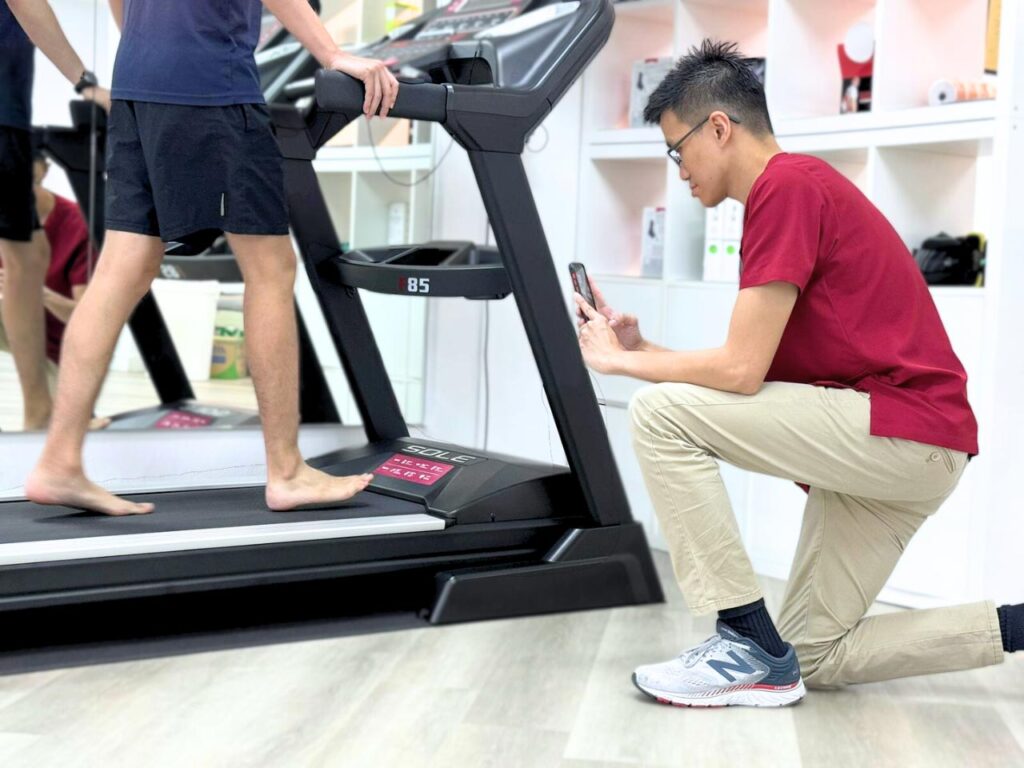Running with Flat Feet – Challenges & Solutions
Running should feel freeing, but for runners with flat feet, it often comes with discomfort and frustration. Without the right support, every stride can put extra strain on your feet, knees, and lower back, making running feel like a challenge rather than a joy.
The good news? You do not have to quit running or just endure the pain. With the correct footwear, running technique, and expert guidance, you can run comfortably and efficiently. This guide will help you understand how flat feet impact your running, how to choose the best shoes, and strategies to keep you moving with confidence.
What Does It Mean to Be a Flat Foot Runner?
Understanding Flat Feet:
Flat feet, or fallen arches, occur when the arch of the foot collapses, causing the entire sole to touch the ground. This can lead to an uneven distribution of weight while running and walking, often resulting in overpronation.

What is Overpronation?
Overpronation is the excessive inward rolling of the foot when it strikes the ground. Runners with flat feet tend to overpronate, which can:
- Increase strain on the ankles and knees
- Lead to foot fatigue and instability
- Cause discomfort in the lower back and hips
By understanding how your feet function, you can make better choices when selecting running shoes and adapting your running technique.

Common Issues & Injuries Faced by Flat Foot Runners
Flat-footed runners are more prone to certain injuries due to the lack of natural arch support. Some of the most common issues include:
- Inflammation of the plantar fascia (the tissue supporting the arch)
- Causes sharp pain in the heel, especially in the morning or after long runs
2. Shin Splints
- Pain along the inner edge of the shinbone due to repeated stress
- Often caused by improper foot alignment and lack of support
3. Knee, Hip, and Lower Back Pain
- Misalignment due to overpronation can put excessive strain on joints
- Leads to long-term discomfort if not addressed properly
4. Bunions & Heel Spurs
- Structural deformities caused by repetitive stress and improper footwear
- Can make running painful if left untreated
Preventing these injuries starts with choosing the right shoes and incorporating foot-strengthening exercises.
How to Choose the Best Running Shoes for Flat Feet
The right running shoes can make all the difference for runners with flat feet. Here’s what to look for:
1. Stability Shoes
- Designed to provide structured arch support
- Helps control excessive inward rolling (overpronation)
2. Motion-Control Shoes
- Offer the highest level of support and stability
- Ideal for runners who experience severe overpronation
3. Cushioned Midsoles
- Reduces impact and absorbs shock with every step
- Enhances comfort for long-distance running
4. Firm Heel Support
- Prevents excessive strain on tendons and ligaments
- Helps keep the foot in a neutral position
5. Wide Toe Box
- Allows natural expansion of the foot while running
- Prevents bunions and unnecessary pressure on toes
6. The Importance of Gait Analysis
At Physio & Sole Clinic, we use advanced gait analysis to assess your running mechanics. This allows us to recommend the best shoes tailored to your unique foot structure and stride pattern.

Training & Running Tips for Flat Foot Runners
Adapt Your Running Technique
Improving your form can help prevent injuries:
- Focus on Midfoot Striking – Landing on the midfoot instead of the heel reduces stress.
- Increase Cadence – Aim for shorter, quicker strides to improve efficiency.
- Run with Proper Posture – Keep your body upright and engage your core for better stability.
Strengthening & Stretching Exercises
Building strength in your feet and lower legs can improve your running performance:
1. Heel Raises
- Strengthens calf muscles and foot arches
- Stand with feet hip-width apart and slowly lift your heels
2. Arch Lifts
- Helps strengthen the intrinsic muscles of the foot
- Roll your weight to the outer edge of your foot while keeping toes on the ground
3. Calf Wall Stretch
- Reduces tension in the Achilles tendon and calf muscles
- Stand facing a wall, press your hands against it, and stretch one leg behind

4. Use a Foot Roller
- Massages the plantar fascia and improves circulation
- Roll a tennis ball or foot roller under your arch for relief
Running Surface
- Stick to Softer Surfaces – Track and grass reduce impact on the joints.
- Avoid Uneven Terrains – Running on trails with rocks or slopes can increase the risk of injury.
Gradual Mileage Increase
- Increase distance by no more than 10% per week to avoid overuse injuries.
- Listen to your body and rest when necessary.
The Role of Custom Orthotics & Professional Support
Why Consider Custom Insoles?
- Provide additional arch support tailored to your feet structure
- Correct alignment issues and reduce strain on joints
- Improve overall comfort and running efficiency
Expert Support at Physio & Sole Clinic
Our podiatrists specialise in treating flat foot runners, offering:
- Custom orthotics designed for your specific foot mechanics
- Professional gait analysis to assess running efficiency
- Strengthening programmes to reduce the risk of injury
FAQs – Everything Flat Foot Runners Need to Know
- Do Flat Feet Affect Running Speed?
No, flat feet do not inherently slow you down, but improper support can lead to fatigue and inefficiency. - Can Flat-Footed Runners Wear Minimalist Shoes?
Minimalist shoes lack arch support and can increase injury risk for runners with flat feet. - How Often Should I Replace My Running Shoes?
Every 400-600 km or every 6-12 months, depending on wear and tear. - Are Stability Shoes Enough, or Do I Need Orthotics?
If you experience pain despite wearing stability shoes, custom orthotics may be necessary for added support.
Step Into the Right Support for Your Runs
Running with flat feet does not mean you have to live with pain or injuries. By choosing the right shoes, improving your running technique, and seeking professional support, you can enjoy running without limitations.
At Physio & Sole Clinic, we help runners find personalised foot care solutions to enhance performance and prevent injuries. Whether you need gait analysis, custom orthotics, or expert advice, we’ve got you covered.






